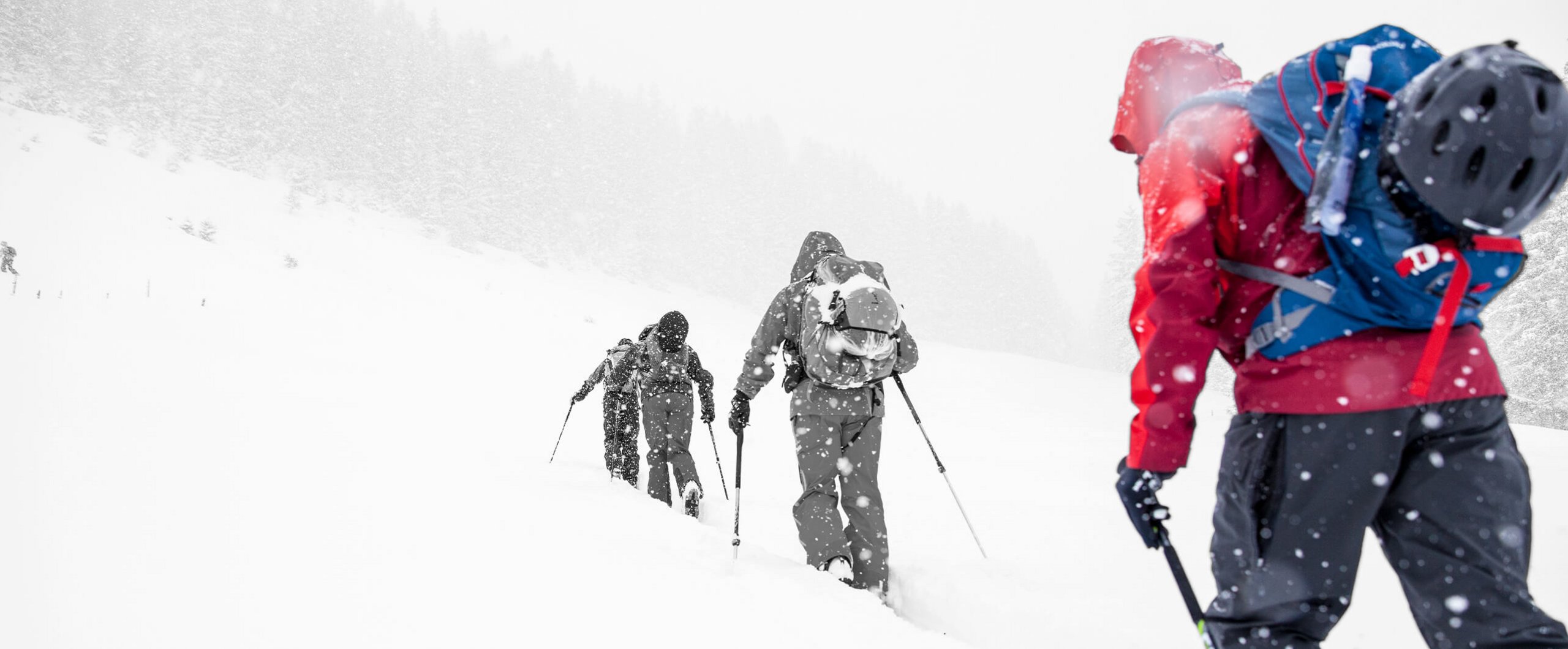
Ski and snowshoe tours
1. Healthy and fit in the mountains
Ski touring is an endurance sport. The valuable stress stimuli for heart, circulation and muscles require health and an honest self-assessment. Avoid time pressure and choose the pace so that no one in your group gets out of breath. Make sure you have energy reserves for the descent.
2. Careful route planning
Maps, guide literature, the Internet and experts provide information about the route, length, altitude difference and current conditions. Pay particular attention to the weather forecast, as cold, wind and poor visibility greatly increase the risk of accidents. Also plan alternative routes. Find out about national mountain rescue emergency numbers (European emergency 112).
3. Complete equipment
Adapt your equipment to the winter conditions and the specific tour destination. Standard emergency equipment includes an avalanche transceiver, probe and shovel, as well as a first aid kit, bivy sack and cell phone. An airbag system increases the chances of survival. Check your equipment before starting and carry a repair kit.
4. Avalanche situation report
Before the tour, inform yourself in detail about the avalanche danger: How? Where? What? This is where the avalanche report comes in handy. Pay particular attention to information about the danger level (1-5), the danger points (Where is it dangerous today?) and the danger patterns (What is the main danger today?).
6. Breaks and orientation
Fluids, energy and breaks are necessary to maintain performance and concentration. Hot, isotonic drinks are ideal thirst quenchers and warmers. Orient yourself continuously ("I know where I am") and critically assess existing tracks.
7. Keep distances
Clearances serve to relieve the snowpack and limit damage. Relief distances of 10 m when ascending steep slopes also increase comfort when making hairpin turns. When skiing downhill, always keep distances of at least 30 m and ski very steep slopes individually.
8. Avoid falls
Falls on the descent are the most frequent cause of accidents on ski tours. For the snowpack, they mean a great deal of additional stress. Good skiing technique and a speed adapted to the ability reduce the risk. A ski helmet protects against head injuries. Caution: Danger of falling on frozen snow and in rocky terrain!
9. Small groups
Small groups (up to 6 people) increase safety. Communication with other winter sports enthusiasts and mutual consideration prevent dangerous situations. Stay together in the group. Inform familiar people about destination, route and return. Those who are traveling alone should keep in mind: Even minor incidents can lead to serious emergencies.
10. Respect for nature and the environment
The mountains offer a valuable free space to move in unique wilderness. Enjoy this freedom! Be considerate of wildlife, respect protected areas and do not enter reforested areas. To get there, carpool or use public transportation.
More informations under: https://www.alpenverein.de/Bergsport/Sicherheit/10-Empfehlungen/